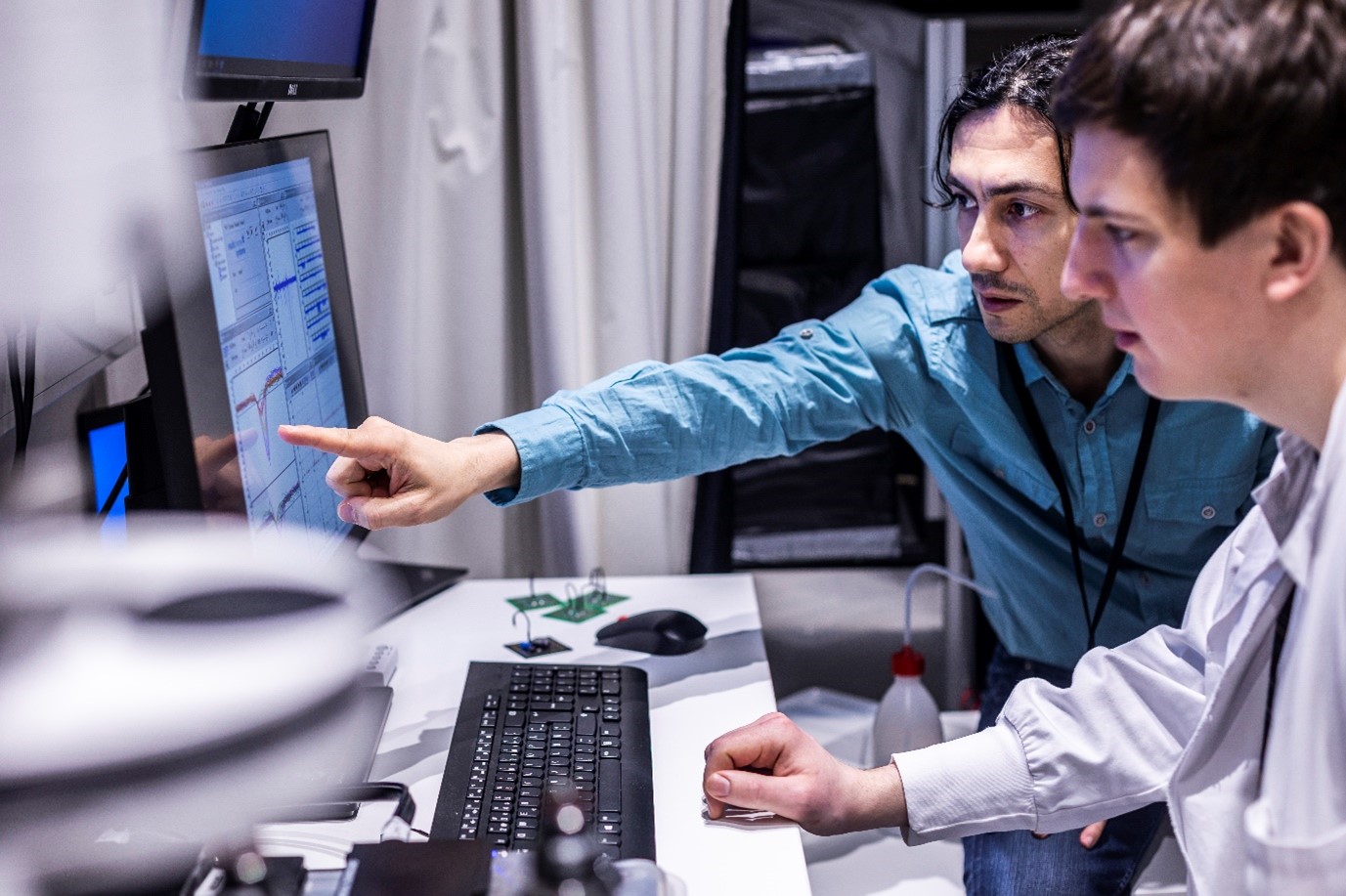Photo: Jonne Renvall
Dr. Emre Kapucu and MSc. Andrey Vinogradov took the lead and initiate the process with the encouragement of Adj. Prof Susanna Narkilahti, the head of Neuro Group. After several meetings and discussions together with all the co-authors, data was reformatted and presented in the most user-friendly way possible. The original research data is now available in one of the most popular public repositories for neuroscience community, G-node, with all the required tools (link to data). Data descriptor is in parallel published in Nature Scientific Data. (link to paper)
Dr. Kapucu, an Academy of Finland Postdoctoral Researcher, highlights the importance of open science.
What is the importance of open science?
The scientific community encourages open science more and more lately. The obvious reason behind it of course is the more accurate verification of scientific results in the research community and increase the productivity by sharing research outcomes with all peers. In addition to these, there are also societal benefits since the research has more engagement from the general audience. Such an engagement increases the people’s trust in science as well.
What makes this dataset important?
The shared dataset is 2 TB in size covering approximately 740 minutes of raw microelectrode array (MEA) recordings. To our knowledge, this is the largest MEA data set ever shared from functional in vitro human neuronal networks. The analysis results of the same data published previously by Dr. Tanja Hyvärinen and co-workers have contributed to the field significantly. However, we believe that the original data has much more potential that cannot be fit in one single research paper. For example, it enables parallel investigation of the functional aspects of maturing cortical neuronal networks in human and rat cells in vitro to see their usability as testing platforms for drug development and screening and neurotoxicity evaluation.
Importantly, as in vitro models, particularly ones based on human cells, are emerging as additional research tools next to much-used animal cells and animal models, it is crucial to share the data so that we can critically evaluate the benefits of these novel models. Of course, that needs more than just our data set. But hopefully, in the future, we will gain solid knowledge to be able to make the decisions even to replace some of the animal dependent research with human cell-based research.
We hope and trust that this publicly available dataset will provide more possibilities for experimental and computational neuroscientists to contribute to the field significantly in the coming times.

